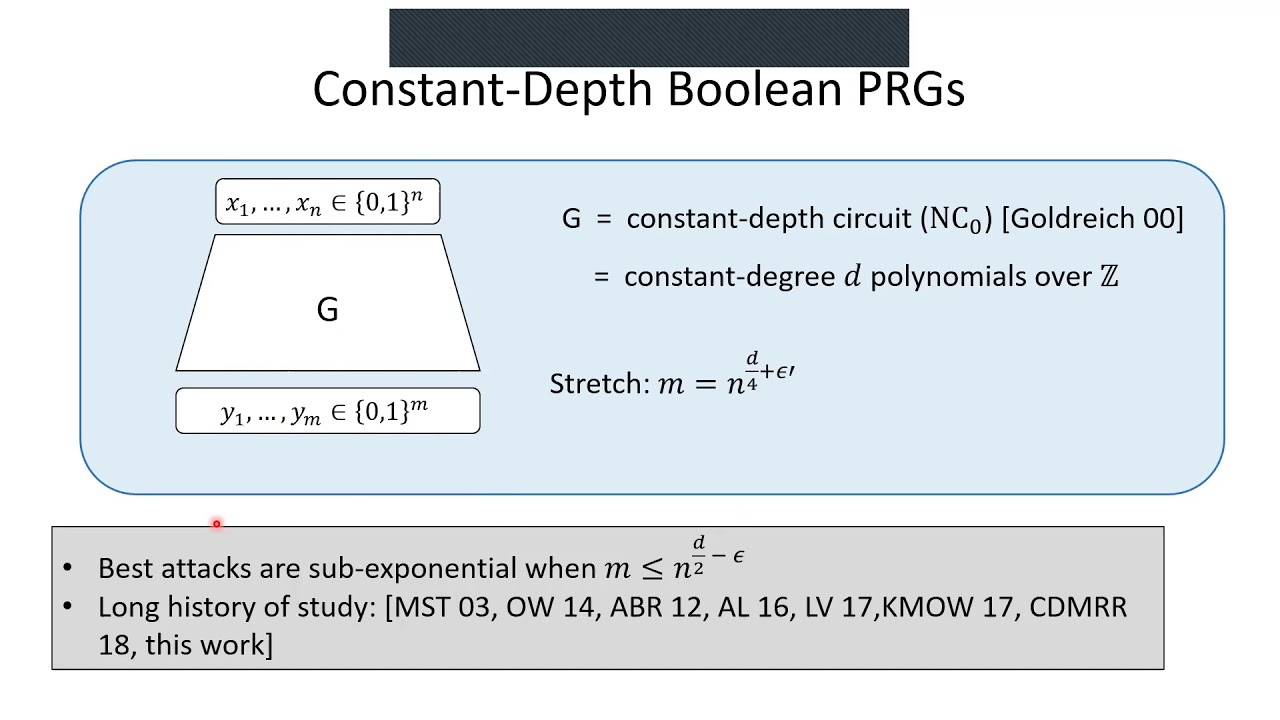Welcome to the resource topic for 2020/764
Title:
Indistinguishability Obfuscation from Simple-to-State Hard Problems: New Assumptions, New Techniques, and Simplification
Authors: Romain Gay, Aayush Jain, Huijia Lin, Amit Sahai
Abstract:In this work, we study the question of what set of simple-to-state assumptions suffice for constructing functional encryption and indistinguishability obfuscation (i\mathcal{O}), supporting all functions describable by polynomial-size circuits. Our work improves over the state-of-the-art work of Jain, Lin, Matt, and Sahai (Eurocrypt 2019) in multiple dimensions. New Assumption: Previous to our work, all constructions of i\mathcal{O} from simple assumptions required novel pseudorandomness generators involving LWE samples and constant-degree polynomials over the integers, evaluated on the error of the LWE samples. In contrast, Boolean pseudorandom generators (PRGs) computable by constant-degree polynomials have been extensively studied since the work of Goldreich (2000). We show how to replace the novel pseudorandom objects over the integers used in previous works, with appropriate Boolean pseudorandom generators with sufficient stretch, when combined with LWE with binary error over suitable parameters. Both binary error LWE and constant degree Goldreich PRGs have been a subject of extensive cryptanalysis since much before our work and thus we back the plausibility of our assumption with security against algorithms studied in context of cryptanalysis of these objects. New Techniques: We introduce a number of new techniques: - We show how to build partially-hiding \emph{public-key} functional encryption, supporting degree-2 functions in the secret part of the message, and arithmetic \mathsf{NC}^1 functions over the public part of the message, assuming only standard assumptions over asymmetric pairing groups. - We construct single-ciphertext and single-secret-key functional encryption for all circuits with long outputs, which has the features of {\em linear} key generation and compact ciphertext, assuming only the LWE assumption. Simplification: Unlike prior works, our new techniques furthermore let us construct {\em public-key} functional encryption for polynomial-sized circuits directly (without invoking any bootstrapping theorem, nor transformation from secret-key to public key FE), and based only on the {\em polynomial hardness} of underlying assumptions. The functional encryption scheme satisfies a strong notion of efficiency where the size of the ciphertext is independent of the size of the circuit to be computed, and grows only sublinearly in the output size of the circuit and polynomially in the input size and the depth of the circuit. Finally, assuming that the underlying assumptions are subexponentially hard, we can bootstrap this construction to achieve i\mathcal{O}.
ePrint: https://eprint.iacr.org/2020/764
Talk: https://www.youtube.com/watch?v=x4AKBSgwSAM
See all topics related to this paper.
Feel free to post resources that are related to this paper below.
Example resources include: implementations, explanation materials, talks, slides, links to previous discussions on other websites.
For more information, see the rules for Resource Topics .
